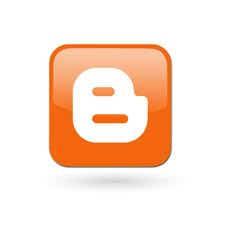.png)
Blogger is a service that allows users to post blogs with time-stamped entries. Blogger is available online and as an app on iPhone and Android smartphones.
I have been using Blogger to document my evaluations of many different aspects of the ICT module of the PCET course, as well as my personal reflections. The site isn't without its downsides; I found it quite difficult to navigate around Blogger when I first started using it, but with some practice it does not take long to pick up. I would definitely consider using Blogger in my teaching practice in the future.8/10
 Google+ is said to be the second-largest social networking site in the world. Before researching Google+ for the purpose of this course, I had no idea what it was or what it does.
Google+ is said to be the second-largest social networking site in the world. Before researching Google+ for the purpose of this course, I had no idea what it was or what it does.Google+ seems to be linked to just about everything. I find it very complex and far too difficult to get around. I have no doubt that it can be helpful when proper attention is paid to learning how to use it properly, but at the moment I will be trying to avoid Google+ as much as is possible.
3/10
Bubbl.us would be a very handy tool to use when it is necessary to include the input of the whole classroom to demonstrate knowledge on a particular topic. Bubbl.us diagrams can then be saved and shared to everyone.
7/10
.png) Facebook is the biggest online social networking site in the world. Nowadays, there are very few students who do not use Facebook for personal use. Facebook gives users the opportunity to create groups. This can be extremely useful for students to keep in touch with the whole class around exam time and assignment deadlines! Whilst perhaps not useful from the point of view of the teacher, it may be worth introducing students to this method of keeping in touch easily without necessarily sending friend requests to the whole class.
Facebook is the biggest online social networking site in the world. Nowadays, there are very few students who do not use Facebook for personal use. Facebook gives users the opportunity to create groups. This can be extremely useful for students to keep in touch with the whole class around exam time and assignment deadlines! Whilst perhaps not useful from the point of view of the teacher, it may be worth introducing students to this method of keeping in touch easily without necessarily sending friend requests to the whole class.8/10
 Twitter is another social networking site that enables users to 'tweet' within the limit of 140 characters.
Twitter is another social networking site that enables users to 'tweet' within the limit of 140 characters.Twitter gives its users an opportunity to follow anybody they like without the other person necessarily following back. I believe that Twitter can be a massively influential tool is students are able to use it correctly. Through personal following of lecturers and psychologists myself, I have seen how useful it can be; not only to receive information relating to the course being studied but also to discover things myself through popular 'hash tags'. Although special care needs to be taken when requesting students follow a teacher or lecturer, I believe it is worthwhile exploring the effectiveness of this medium of keeping in touch.
.png)
.png)
Very useful and a love the rating system too!
ReplyDelete